QUESTIONS
SECTION A: BIOLOGY (34 marks)
Answer all the questions in this section in the spaces provided.
- State five adaptations of xerophyte plant leaves. (5 marks)
- Name the organs where meiosis occurs in human beings. (2 marks)
- State two functions of each of the following hormones in the menstrual cycle:
- progesterone(2 marks)
- luteinising hormone.(2 marks)
- The diagram below illustrates a chromosome.
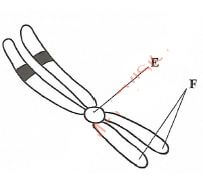
- Name the part labelled
E.................................. (1 mark)
F.................................. (1 mark) - State the total number of chromosomes in a human being.(1 mark)
- What is the name given to an identical pair of chromosomes that controls a particular trait.(1 mark)
- Name the part labelled
- Give the meaning of each of the following terms as used in genetics:
- recessive gene;(1 mark)
- genotype.(1 mark)
- The diagram below shows the life cycle of a butterfly.
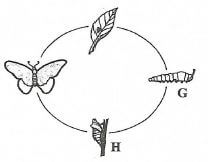
- Name the stages labelled
G.....................................(1 mark)
H.....................................(1 mark) - How is the life-cycle illustrated different from that of a grasshopper? (1 mark)
- Name one hormone involved in the illustrated life cycle.(1 mark)
- Name the stages labelled
- State the meaning of the following terms
- growth;(1 mark)
- development (1 mark)
- The diagrams below illustrate the structure of a forelimb in different animals.
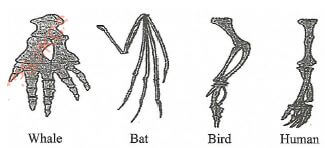
-
- State the name collectively given to the illustrated structures. (1 mark)
- Give a reason for your answer in (a) (1) above.(1 mark)
- Name the type of:
- evolution evidence illustrated by the structures:(1 mark)
- evolution illustrated by the structures. (1 mark)
-
- The diagram below shows a nerve cell

-
- Identify the nerve cell. (1 mark)
- Give a reason for your answer in (a) (i) above. (1 mark)
- State the function of the part labelled.
J............................(1 mark)
K...........................(1 mark)
-
- The diagram below shows the arrangement of bones in a human being

- Name the type of skeleton illustrated by the bones.(1 mark)
- Name the type of joint found at the part labelled L. (1 mark)
- On the diagram, label the part of the skeleton with gliding joints. Label the part with the letter M. (1 mark)
SECTION B: CHEMISTRY (33 marks)
Answer all the questions in this section in the spaces provided.
- Compound J reacts with one mole of chlorine gas to form one product K, whose molecular formula is C3H6CL2 (1 mark)
- Draw the structure of compound J.(1 mark)
- Name compound K. (1 mark)
- What type of reaction occurs between compound J and chlorine gas.(1 mark)
-
- Sulphur occurs in two crystalline forms;
- What name is given to the different forms of sulphur? (1 mark)
- Name the two forms of sulphur. (1 mark)
- Name another element that occurs in two crystalline forms. (1 mark)
- Sulphur occurs in two crystalline forms;
- Figure 1 shows curves representing the changes in mass when equal masses of powdered marble and marble chips were reacted with excess 2M hydrochloric acid. Study it and answer the questions that follow.
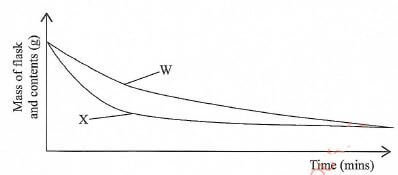
Figure 1- Write an equation for the reaction between marble chips and hydrochloric acid.(1 mark)
- Identify the curve that represents the reaction with powdered marble chips. Explain.(2 marks)
- Other than the factor being investigated in this reaction, state another factor that affect the reaction rate.(1 mark)
- Aluminium is extracted using electrolytic method.
- Name two ores from which aluminium is extracted.(2 marks)
- During the electrolysis process, cryolite (Na, Alf) is added to aluminium oxide. Give a reason.(1 mark)
- State two properties of duralumin, an alloy of aluminium that makes it preferred to aluminium in the construction of aircrafts.(2 marks)
- The atomic mass of element E is 13. Given that 17.25g of E reacted completely with 11.5 dm? of oxygen at 25°C. Determine the relative atomic mass of E. (Molar gas volume = 24 dm)(3 marks)
- Consider the following structures of two cleansing agents.

- Identify the soapless cleansing agent. (1 mark)
- State the advantage of the cleansing agent Cover B. (1 mark)
-
- State Charles' law.(1 mark)
- Explain why the pressure of a fixed mass of a gas increases when the volume of the gas is reduced at constant temperature.(2 marks)
- Study Figure 2 and use it to answer the questions that follow.
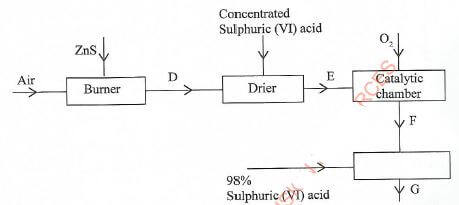
Figure 2- Other than rare gases, name two gases which are from the bumer to the drier.(1 mark)
- Name the catalyst used in the catalytic chamber. (1 mark)
- Write an equation for the reaction which occurs in the catalytic chamber.(1 mark)
- Write the formula of G.(1 mark)
-
- What is a standard solution?(1 mark)
- Calculate the mass of sodium hydroxide that can be used to prepare 250 cm3 of 1 mol dm-3 sodium hydroxide solution. (Na - 23.0, 0 = 16.0, H = 1.0) (2 marks)
-
- What is meant by enthalpy of reaction?(1 mark)
- Draw an energy level diagram for dissolving ammonium nitrate in water in which the temperature of the resulting solution drops.(2 marks)
SECTION C: PHYSICS (33 marks)
Answer all the questions in this section in the spaces provided.
- Figure 3 shows an object in the shape of letter E placed in front of a plane mirror.
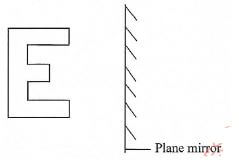
Figure 3
Draw a ray diagram to show the image of the object.(3 marks) - Two rods A and B were rubbed with a piece of cloth and brought close to a positively charged sphere. It was observed that rod A attracted the sphere while rod B repelled the sphere. State a reason for this observation.(1 mark)
-
- Figure 4 shows a bar magnet.

Figure 4
Draw the magnetic field lines around the magnet.(2 marks) - State the reason why the power of attraction of a magnet is greatest at the poles.(1 mark)
- Figure 4 shows a bar magnet.
- State the reason why a sound wave is a longitudinal wave(1 mark)
-
- Define the potential difference between two points X and Y.(1 mark)
- Figure 5 is a graph of potential difference against current obtained in an experiment to study Ohm's law.
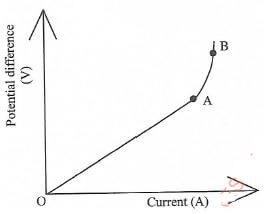
Figure 5- Explain section OA of the graph(2 marks)
- State the reason for the change in the shape of the graph in section AB. (1 mark)
- State the factors that determine the quantity of heat produced by a coil carrying a constant current.(2 marks)
- A student observed that when part of a ruler is immersed in water in a beaker, the ruler appears bent. Explain this observation.(2 marks)
- Figure 6 shows an object O height 1 cm placed 4 cm in front of a converging lens of focal length 10 cm.
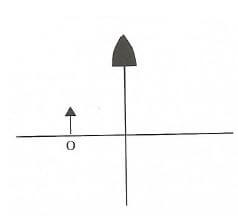
Figure 6- On the figure draw a ray diagram to determine the position of the image.(3 marks)
- From the ray diagram in (a) determine the size of the image. (1 mark)
- A domestic consumer uses five 100 W bulbs for four hours daily. Given that the bill is Ksh. 900 in a 30 day month, determine the cost per Kilowatt-Hour of electrical energy.(3 marks)
- Explain how a cathode ray oscilloscope is used to measure voltage.(2 marks)
- State three ways in which cooling the anode of an X-ray tube is achieved.(3 marks)
- State with a reason which particles are deflected less when moving through a strong magnetic field.(2 marks)
- Figure 7 shows an incomplete circuit consisting of a p-n junction diode and a switch.

Figure 7- State the name of the region labelled Z.(1 mark)
- Complete the diagram to show how a cell may be connected at C so that the junction is reverse biased when the switch S is closed.(1 mark)
- State what happens to the charges at Z when the switch in (b) is closed.(1 mark)
MARKING SCHEME
-
- Leaves modified into thoms/needles to minimize loss of water/transpiration;
- Have thick waxy cuticle to reduce the rate of transpiration;
- Curl surface to reduce surface exposed to transpiration;
- Have sunken stomata which accumulate water to reduce diffusion rate/reduce the surface area for transpiration;
- Have reversed stomata rhythm to reduce the rate of transpiration during the day;
- Some have shiny silvery hairs on the surface to reflect away excess heat;
-
- Ovary:
- Testes;
-
- Progesterone
- Maintains pregnancy;
- Produces estrogen; - Ovulation in females
- Stimulates secretion of testosterone in males;
- Stimulates corpus luteum to secrete progesterone;
- Progesterone
-
- E-Centromere;
F-Chromatids; - 46;
- Homologous chromosomes:
- E-Centromere;
-
- A gene that is masked in the presence of a dominant allele (in heterozygous state);
- Genetic constitution of an organism;
-
- G-Larval stage;
H - Pupa stage: - That of a grasshopper is incomplete metamorphosis i.e. lacks the pupa stage;
- - Ecdysone hormone/moulting hormone;
- Moulting stimulating hormone;
- Juvenile hormone;
- G-Larval stage;
-
- Growth-Permanent and irreversible increase in the amount of living matter in an organism;
- Development - Is the progressive change in the form, shape, behavior and complexity of an organism;
-
-
- Homologous structures;
- Structures have similar basic form or common embryonic origin but modified to perform different functions in different organisms.
-
- Comparative anatomy;
- Divergent evolution/Adaptive radiation;
-
-
-
- Sensory neuron;
- Has a laterally positioned cell body,
- J-Insulates the axon to speed up impulse transmission;
K-Transmit impulses away from this cell body to other neurons;
-
-
- Appendicular skeleton;
- Hinge joint;
-
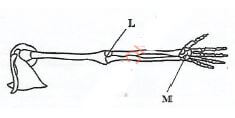
-

- 1,2-dicholopropane
- Addition reaction
-
-
- Allotropes
- Monoclinic / Beta Sulphur
Rhombic
- Carbon
-
-
- CaCO3(s) +2HCI(aq) → CaCl2(aq) + CO2(s) + H2O(l)
- X - The gradient of the graph is steeper because of increased surface area.
- - Concentration
- Temperature
- Catalyst
- Pressure (in the case of gases)
(Any 1 correct - 1 mark)
-
- Bauxite (Al2O3.2H2O)
Mica (K2Al2Si6O6)
Corundum (Al2O3) - - to lower the melting point of aluminium oxide.
- - Duralumin is stronger than Aluminium
- Duralumin is harder than Aluminium/Duralumin is stronger than Aluminium
- Bauxite (Al2O3.2H2O)
-
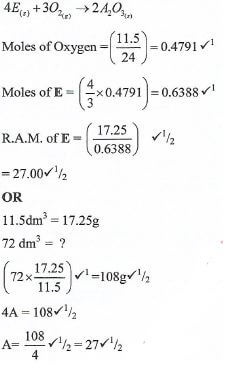
-
- C
- C does not form scum with hard water hence does not waste soap.
-
- The volume of a fixed mass of gas is directly proportional to the temperature at constant pressure.
- As the volume decreases, there is increases bombardment of molecules against the walls of the container, hence increased pressure
-
- Carbon(IV) oxide; Nitrogen, Water vapour,SO2
- Vanadium(V) oxide
- 2SO2(g) + O2(g) → 2SO3(g)
H2S2O7
-
- A solution whose concentration/molarity is known
-
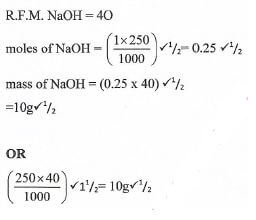
-
- The heat change that occurs when reactants are converted to products.
-
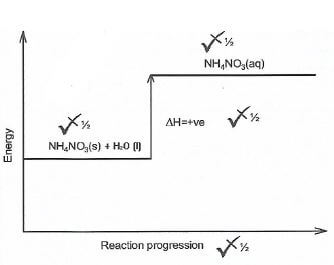
-
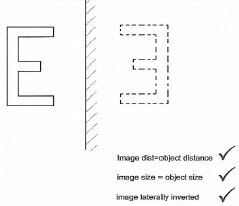
- Rod A and B acquired opposite charges upon rubbing i.e. A- Negatively charged and B - Positively charged
-
-

- Correct Direction - 1 mark
- Correct pattern - 1 mark - The magnetic field lines are most concentrated at the poles/concentration of magnetic field lines is greatest at the poles)
-
- The direction of vibrations of particles of the medium is parallel to the direction of sound energy
-
- The work done in moving a unit charge from point X to point Y.
-
- Voltage is directly proportional to current/Graph is straight and therefore Ohm's law is obeyed.
- The temperature of the lamp is changing or cross sectional area is decreasing or length is increasing.
- - The resistance of the coil/number of turns in the coil//voltage
- The time taken - Due to refraction of light ; velocity of light changes at the interface.
-
-
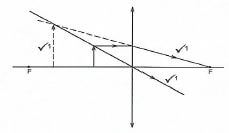
- Size of image = 4.7-5.7 ± 0.5cm
-
- 900 = no. of units x rate
Rate = 900
5x100x4x30
1000
= sh. 15.00 per kWh - Voltage to be measured is connected across the Y-plates
The displacement of the spot is then measured
Voltage = No. of displacement x sensitivity - - Anode is made of a good conductor such as copper.
- Use of cooling fins.
- Circulating oil through channels in the anode. - - Alpha particles
- They are heavier compared to the beta particles -
- Z is the depletion layer/potential barrier/energy gap
-
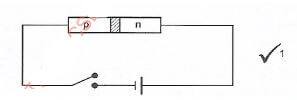
(positive terminal connected to n-type, negative terminal connected to P-type) - Electrons and holes in their respective regions are attracted away from the junction by the external voltage.
Download KCSE 2018 General Science Paper 2 with Marking Scheme.
Tap Here to Download for 50/-
Get on WhatsApp for 50/-
Why download?
- ✔ To read offline at any time.
- ✔ To Print at your convenience
- ✔ Share Easily with Friends / Students

